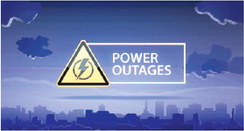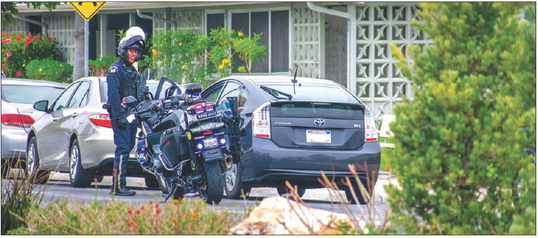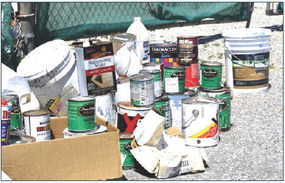BEFORE THE POWER GOES OUT ….


BEFORE THE POWER GOES OUT
To keep your food from spoiling during a power outage, keep on hand:
• One or more coolers—inexpensive styrofoam coolers work well.
• Ice—Surrounding your food with ice in a cooler or in the refrigerator will keep food colder for a longer period of time during a prolonged blackout.
• A digital quick-response thermometer— With these thermometers you can quickly check the internal temperatures of food to ensure they are cold enough to use safely.
• Make sure you have access to NOAA radio broadcasts. Find an online NOAA radio station. You can search for a NOAA radio app in the Apple Store or Google Play. Purchase a batterypowered or hand-crank NOAA radio in the Red Cross Store
•Have at least a half tank of gas in your car. Get extra con-
POWER, page 14 tainers and fill them with gas. If power is out for an extended time, gas supply may be limited and lines at service stations long.
• Take an inventory now of the items you need that rely on electricity.
• Talk to your medical provider about a power outage plan for medical devices powered by electricity and refrigerated medicines. Find out how long medication can be stored at higher temperatures and get specific guidance for any medications that are critical for life.
• Plan for batteries and other alternatives to meet your needs during an outage.
• Determine whether your home phone will work in a power outage and how long battery backup will last.
• Review the supplies that are available in case of no power. Have flashlights with extra batteries for every household member. Have enough nonperishable food and water.
• Keep mobile phones and other electric equipment charged.
After the Power Goes Out
• Report your outage immediately to your local electric company. Don’t rely on your neighbors to report your outage.
Leisure World residents should report an outage online at www.sce.com/outage-center/report-an-outage. Please be patient. Your information may be our only report from your neighborhood at the time. If you see fallen power lines, call 9-1-1 first, then call SCE’s emergency number immediately at (800) 611-1911.
• Turn off all appliances. Leave on one lamp to know when power has been restored.
That way, you can avoid a circuit overload and another outage that may result when power is restored to all appliances at once.
• Keep freezer and refrigerator doors closed. Food will stay frozen for 36-48 hours in a fully loaded freezer if you keep the door closed. A half-full freezer will generally keep food frozen for 24 hours. For refrigerated items, pack milk, other dairy products, meat, fish, eggs, gravy, and spoilable leftovers into a cooler surrounded by ice. Inexpensive Styrofoam coolers are fine for this purpose.
• Listen to the local radio station on your batteryoperated radio for regular news and weather updates.
• If using portable stoves, kerosene heaters, or lanterns, make sure that the area is sufficiently ventilated. To avoid carbon monoxide poisoning, generators, camp stoves or charcoal grills should always be used outdoors and at least 20 feet away from windows. Never use a gas stovetop or oven to heat your home.
• If you must travel, help protect line workers and crews when you see them on the roadside making emergency repairs. Move over from the lane nearest the workers or slow down until you can safely pass the work site.
• If it is hot outside, close drapes and blinds on the sunny side of your house, drink plenty of fluids, take your pets to cool locations.
• Do not hesitate to contact a physician if you have any health-related questions. Stay Safe in the Dark
• When in doubt, throw it out. Throw away any food that has been exposed to temperatures 40 degrees or higher for two hours or more, or that has an unusual odor, color or texture.
• If the power is out for more than a day, discard any medication that should be refrigerated, unless the drug’s label says otherwise. If a life depends on the refrigerated drugs, consult a doctor or pharmacist and use medicine only until a new supply is available.
Restoring Your Power
Every electric company has a detailed plan for restoring electrical service after a power outage.
Typically, one of the first steps a company takes—to prevent injuries and fires—is to make sure that power is no longer flowing through downed lines.
Restoration then proceeds based on established priorities.
The first to be repaired are transmission lines and distribution substations, because they are the most important lines carrying power from generating plants to large numbers of customers over wide areas.
Next, electric companies restore power to critical community services such as hospitals, police and fire protection, and communications facilities.
The next priority is to restore service to the largest number of people as soon as possible.
Service to neighborhoods, industries, and businesses is systematically restored, followed by single residences and small groups of customers, until restoration is complete.
—from the American Red Cross, Southern California Edison and the Federal Emergency Management Agency



